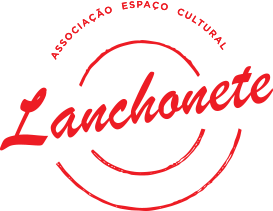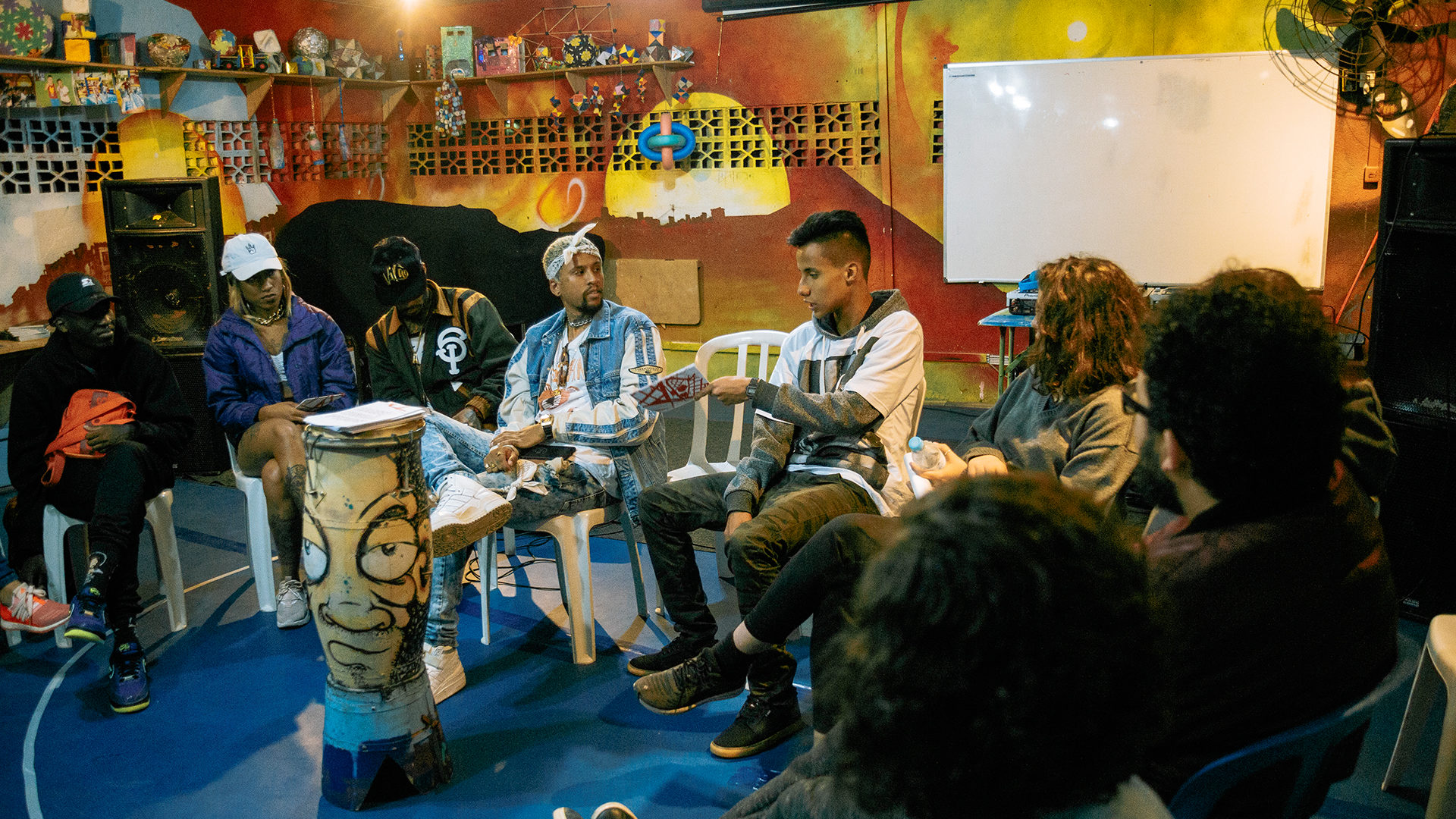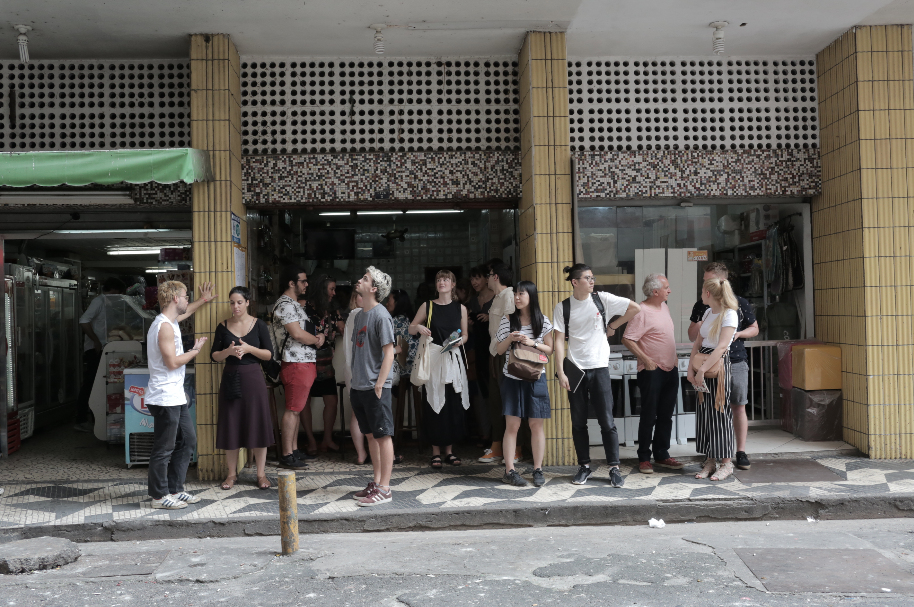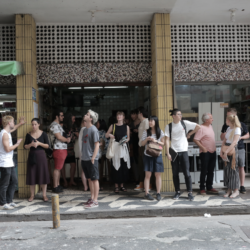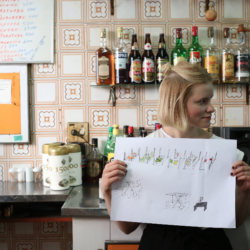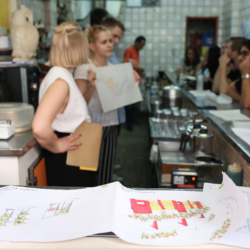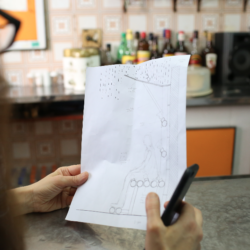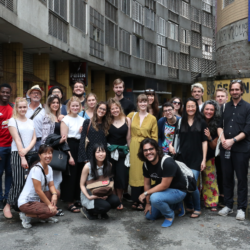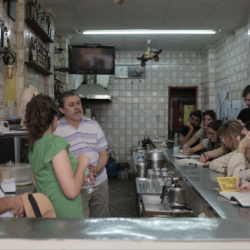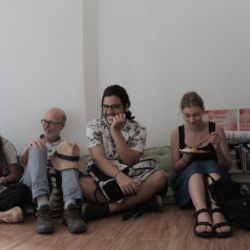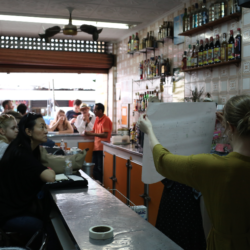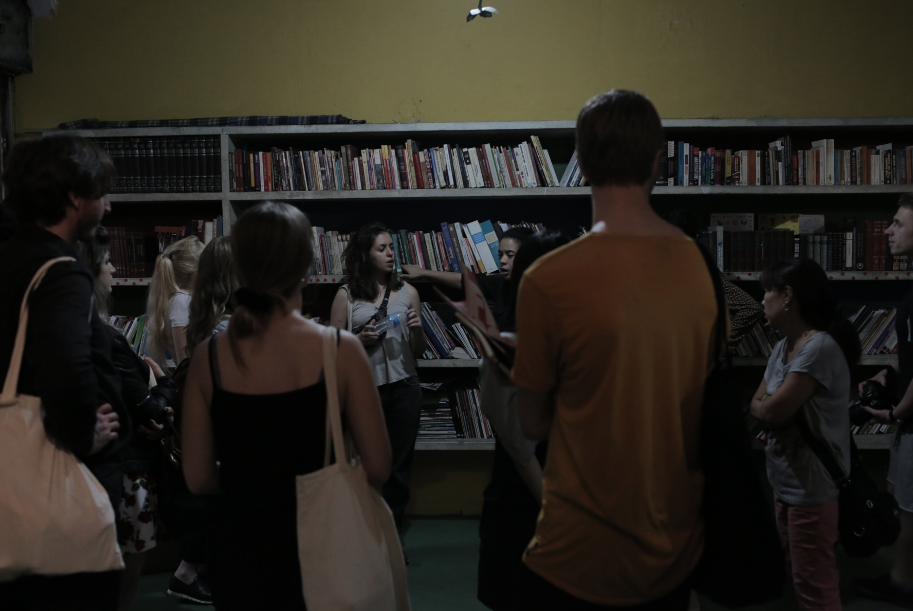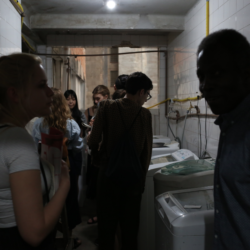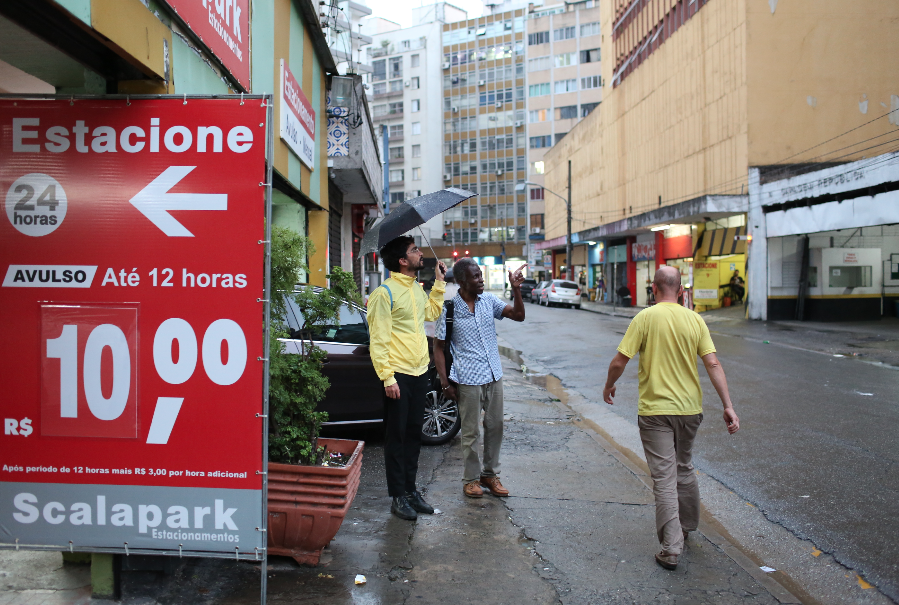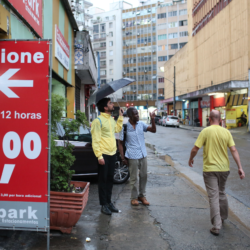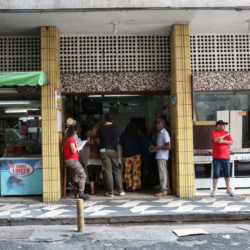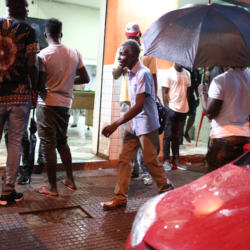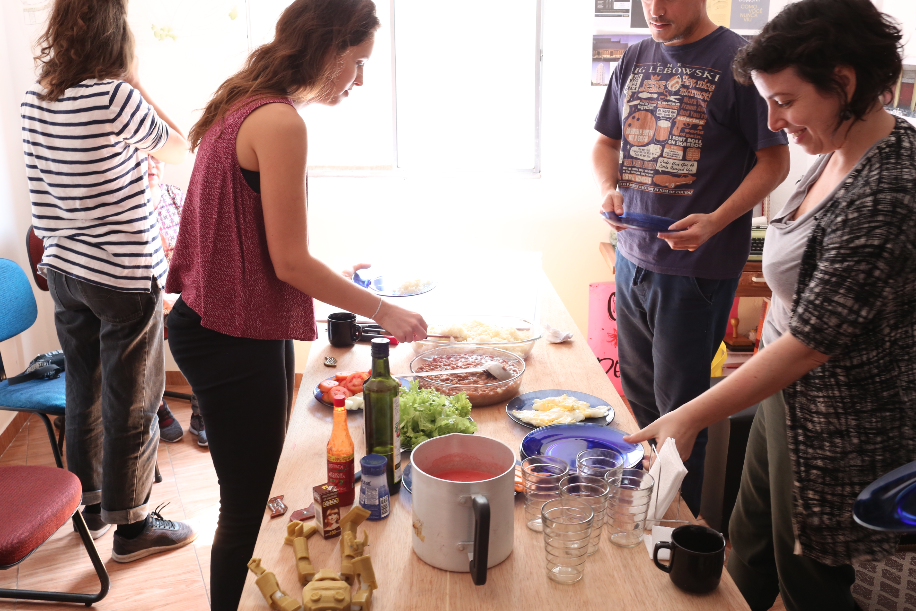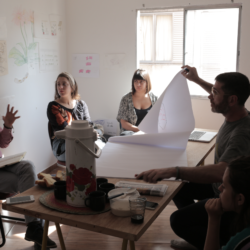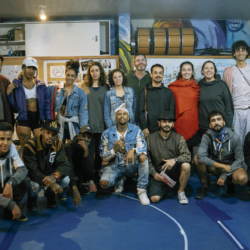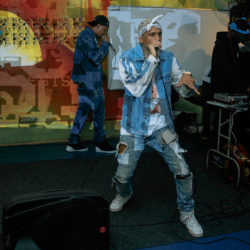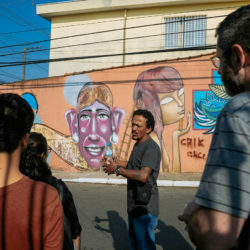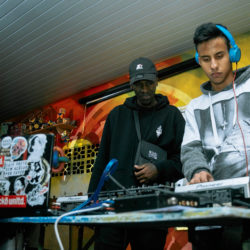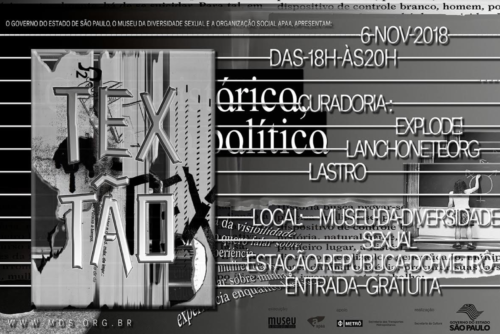Post-Planning Cycle
Vídeo: Coletivo Coletores
By the time Lanchonete.org reached its five-year mark, we had a momentum that could not easily stop on December 31, 2017. Indeed at this point we had some activities–the Neighborhood Museum, Monday Lunches, an open course on Local Power with Escola da Cidade and a community space to redesign with partners inside and outside the community–that deserved completion. There were also some additional artists and makers who we wanted to host while also ‘disassembling’ the platform. Basically we had a few more things we wanted to do as a group. One might even argue that the ‘post-planning cycle’ was an important time to have a final cohort of residents in as much our guests–international and local–helped us to compound ideas and avoid groupthink on consistent basis over the duration of the project.
Early in 2018 we hosted Berlin-based photographer, Akinbode Akinbiyi. His work began at a small Nigerian spiritual shop in the Center near the Copan Building where Akinbode resided. This corresponded with the second visit of the KTH Royal Institute of Technology in Stockholm whose architecture students worked with their local peers at the Escola da Cidade to start the beginning of an incremental charrette process with the residents of Conjunto Santos Dumont, the modernist compound where the lunch counter is located in its 14 Bis Building. We closed our primary residency unit at the Copan shortly after Akinbode’s stay. However the apartment at Conjunto Santos Dumont, in the adjacent Demoizelle Building, opened for the Amber Art & Design (Philadelphia) residency and the staging of the Neighborhood Museum was still functioning to host the open course and Monday lunches in the period after Carnival and until the end of June, 2018. During this period, artists Mickael Marchand (France), Chico Togni (Brasil), Kadija de Paula (Brasil), Jade Tang (Paris) all lived in the apartment at Rua Paim for short periods. Photographer and one of the primary documentarians of the Lanchonete.org project (2016-18), Leandro Moraes stayed there as well to support the open course and Monday Lunches that other members were planning and hosting. Throughout the first half of 2018 the activities in the Demoizelle apartment-cum-Neighborhood Museum generated more public events at Tarcisio’s Bar downstairs at 14 Bis Building and in the general public space of Conjunto Santos Dumont. During this time, the retiling of the Demoizelle building was completed, and the internal roadway was paved privately, paid for by the three buildings of Conjunto Santos Dumont and its residents. This seems to have changed the usage patterns of the internal roadway.
Visits, residencies, encounters:
Charrette With KTH Royal Institute of Technology of Stockholm
Visit to the 9 de Julho Occupation with KTH Royal Institute of Technology and Akinbode Akinbiyi
Examining African Migration in São Paulo’s Centro, Walking with Akinbode Akinbiyi (and KTH)
Open Engagement conference at the Queens Museum (Outbound: NYC)
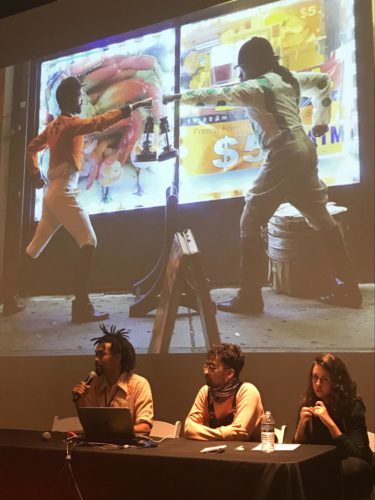
(photo: Linda Fernandez)
Presentation by Raphael Daibert and Paula Van Erven (Lanchonete.org), and Keir Johnston (Amber Art & Design), about the Neighborhood Museum project, at the Open Engagement Conference about socially engaged art. New York, May/2018.
Open Course: Local Power — developing collective projects with and for communities
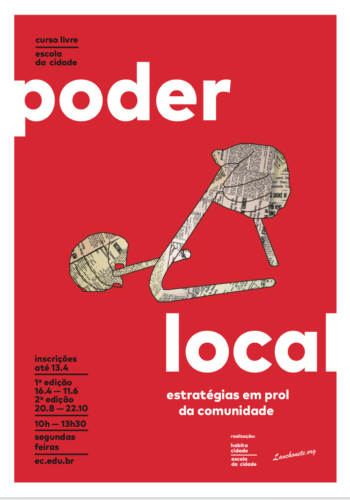
In partnership with the Escola da Cidade and architects from Habita-Cidade, Lanchonete.org developed the open course: “Local power — strategies for the community: developing collective projects with and for communities.” The course presented and debated strategies on how to work in partnership with a community e how to facilitate community dynamics. It took place in the Neighborhood Museum, in the Santos Dumont Complex. The classes had a different partner of Lanchonete.org come to speak at each session, and ended with the traditional Monday Lunches.
*See course syllabus here
Monday lunches at the Neighborhood Museum

UA series of lunches prepared by Lanchonete.org member Abdoulaye Guibila, at times alongside other guest/partner cooks, for the neighbors in the Demoizelle building. The lunches would sometimes have specific conversation themes, and visits from both international and local guests.
Hacking Dakar

Lanchonete.org and Coletivos Coletores began working together in 2016 during Zona da Mata. For the 2018 Dak’Art (Dakar, Senegal) Biennial, Lanchonete.org was invited to produce a videomapping intervention with Coletivo Coletores that included their book launch of ‘Insurgências: Arte, Tecnologia e Território’ at the adjacent African Art Book Fair (AABF).
Cartographic Bodies — Co-curated by Coletivo Coletores & Lanchonete.org
Joining forces after years and several partnerships, Coletivo Coletores and Lanchonete.org co-curated and produced ‘Corporal Cartographies’, a public programme offered during the opening week of the 2018 São Paulo Biennial considering community histories, memory, the city and all of its contradictions, thereby acknowledging the relationship between São Paulo’s Centro and São Mateus in its East Zone, often called the ‘periphery’.
photos: Daniela Cordeiro e Coletivo Via
Is it possible to represent stories that have not yet been told? How are moments of encounter, that contain a physical presence, instigated? How are places of learning in transit created only throughout the passage of time?
To imagine the consequences of a simple launch of data, and the possibilities that create relationships between bodies and places, a relationship that is both atomic and colossal. It is like the chance that is contained within a board game, in which, in a particular temporality, subjects, actions, and sceneries meet and create ways of interacting, participating, and, why not, of subverting. In a way, the construction of individual and collective identities departs from this same principle of causality and chance. In this construction, encounters, places, durations, as well as paths, all turn physical and symbolic bodies into spaces of memories, conflicts, and transformations. The “beyond” is not a new horizon, neither is it an abandonment of the past. We find it in the moment of transiting, in which space and time intersect in order to produce complex figures of difference and identity, past and present, interior and exterior, inclusion and exclusion.
The author Homi K. Bhabha draws us to realize that in these spaces, people and time exist in an “in-between space”, which we prefer to call an interstice, a space between one thing and another, or between that which is together, connected. Coincidentally, in the year of 2018, a new human organ was discovered, called the interstitium. It has apparently appeared to be invisible all throughout our existence up until now, while it simultaneously proved to be fundamental to the understanding of a series of matters concerning our body.
Trip do Kaaysá Artist Residency in Boiçucanga, SP
Kaaysá is a multi-disciplinary residency for artists and creators who wish to develop their poetic voices within the context of the Brazilian Rainforest, the Atlantic Ocean with special attention to collective, environmental and socio-political issues. On September 9th, 2018 Espaço Cultural Associação Lanchonete took a road-trip outside its usual urban backdrop and to the Kaaysá Artist Residency on the coast of Boiçucanga. The two organizations presented their work to one another, and looked for areas of future synergy.

photos: www.instagram.com/kaaysa_artresidency
Textão at the Museum of Sexual Diversity/strong>
Having worked with Lastro to co-host visiting Guatemalteca artist Edgar Calel and EXPLODE! for the Cidade Queer cycle both in 2016, Lanchonete.org, Lastro & EXPLODE! came together again to make Textão in 2018.
A The word textão – long text, in English – is an expression commonly used by the black, feminist and LGBTQIA+ communities in Brazil. Textão as a device is usually triggered when people from these communities suffer some kind of aggression. At this moment we feel the need to take position regarding a certain social factor that generates oppression. This speech or text is usually addressed to cisgender people, majorly white heterosexual wealthy men, to remind them of their own privileges and the specific position they occupy within the violent colonial system, based on class, race, gender and sexuality markings.
They are works that, through text and its different possibilities – in music, in poetry, in performance arts, in academia, in political statements, in graphic experiments, in video and even on daily conversations – bring different perspectives and voices that cross, diverge and expand ways of thinking and experimenting the world today. A world that obliges us to deal simultaneously with strong regimes of precariousness, such as those experienced by public museums in the country, and the need to keep moving.
Believing in the mobilizing power of words, especially manifested by voices that were historically silenced, the exhibition space uses viral strategies to reproduce the texts and thoughts of these participants. It seeks, therefore, to contaminate the Center and the borders of the city from the intersection where the museum is located. Intersection understood here, as well as textão, as a critical point and a field of possibilities, in which a position, in a certain direction, must be taken.
*See Textão description and review.
‘Terroir na Paim’ Intervention by Thiago Correia Gonçalves (w/ Coletivo Coletores)
In late November 2018 he conceived ‘Terroir da Paim’, a meat-drying (and eating) intervention in the internal roadway of Conjunto Santos Dumont, helping Lanchonete.org reimagine the urban planning concept of ‘charrette’ (or community consultation) and the culminating step in a series of social design encounters over the previous two years. The next step is the construction of a leisure area (including garden and lighting) for the three-building, 499 apartment Modernist structure.
Arq.urb magazine launch discussion, at Tapera Taperá
